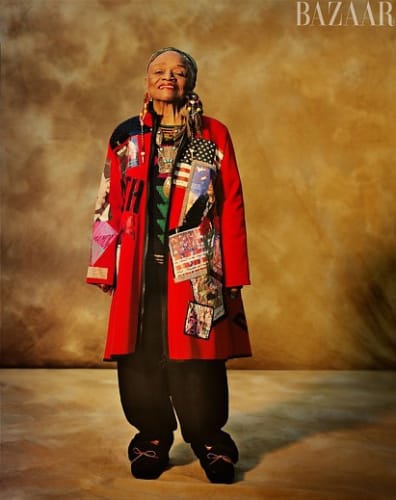Betye Saar. Faith Ringgold. Mickalene Thomas. Julie Mehretu. Simone Leigh. Jordan Casteel. These are only a few of the Black women artists who have recently exhibited in the nation’s largest museums, like the Museum of Modern Art, the Whitney Museum of American Art, the Guggenheim, and the Getty. But long before, it was the Studio Museum in Harlem that had the foresight and intuition to show their work, linking these women both to one another and to generations of Black artists, curators, and critics who have helped reshape American art history over the past 50 years.
Located on Harlem’s famed 125th Street, with Adam Clayton Powell Jr. Boulevard on one side and Lenox Avenue on the other, the physical building that houses the Studio Museum has been closed since 2018 due to a $175 million multi-year expansion project. (Part of the collection has been touring nationally in the show “Black Refractions.”) The museum’s new five-story structure, designed by Ghanaian British architect Sir David Adjaye, will more than double its exhibition space. But that space will still represent only a sliver of the Studio Museum’s cultural impact and influence on how people—as well as elite art museums—have come to understand and relate to African diasporic art.
Since its founding in 1968, the Studio Museum has cultivated some of the most lively debates, thrilling exhibitions, and boldest innovators of Black art that our country has ever seen. Before then, Black artists in New York primarily had to rely for exposure on the city’s predominantly white-led museums or the bohemian galleries in Greenwich Village, which largely ignored or marginalized them. “There was so much racism going on at the time. And sexism. It was hard,” says Faith Ringgold, the 90-year-old Harlem-born artist, whose seminal 1967 painting, American People Series #20: Die, a devastating response to the racial violence and bloodshed in the country during that period, now hangs at MoMA. “The struggle was deep.”
In the late 1960s and ’70s, Ringgold organized protests against MoMA, the Whitney, and other institutions for excluding the works of artists of color and women—specifically, Black women. Against that backdrop, Ringgold, who had her first retrospective in New York at the Studio Museum in 1984, knew how important it was for Black artists to have a museum of their own. “It was certainly very exciting, because I was born and raised in Harlem,” she recalled. “It was a big thing for me.” Originally conceived in 1965, at the height of the civil rights movement, the Studio Museum was at first envisioned as an expression of interracial optimism. This was in part due to a coalition of Black and white artists, philanthropists, activists, and educators who had lobbied for the creation of an art space in Harlem to rival the downtown venues—among them Betty Blayton-Taylor, Carter Burden, Frank Donnelly, Charles Inniss, Eleanor Holmes Norton, and Campbell Wylly. But the museum was also designed to be connected to the community and operate, at least initially, without curators—only directors—which challenged the elitism and hierarchical structures of the art world. “What our founders were creating was very much a bold experiment around the redefinition of the museum,” said Thelma Golden, the Studio Museum’s director and chief curator, who has overseen its exhibitions and programs since 2000. “This idea of calling the Studio Museum a ‘museum’ was about expanding what a museum is and can be.”
However, by September 1968, when the Studio Museum finally opened in a loft space at 2033 Fifth Avenue, just north of its current location, the mood in the United States in general—and Black America, in particular—had changed drastically. That April, Dr. Martin Luther King, Jr., was assassinated in Memphis, and for many, his Dream died with him. The result: Charles Inniss, who became the museum’s first director, found himself at the epicenter of heated debates around African American art at the dawn of the Black Power movement. There’s still no consensus on whether or not a Black guest at the Studio Museum’s first show, Tom Lloyd’s “Electronic Refractions II,” merely hit the protective glass surrounding one of Lloyd’s pieces or destroyed one or two of them entirely. Either way, by most accounts, many actual members of the Harlem community were disappointed by Lloyd’s electronically programmed sculptures composed of colored light bulbs, which recalled traffic lights and theater marquees.
At a moment when the Black Arts Movement, the aesthetic sister to Black Power, was emphasizing figurative art and realistic representations of Black people and their bodies, Lloyd’s show seemed terribly out of sync. For others, though, abstraction was a radical re-envisioning of form and identity, and enabled Black artists to upset the very categories of race that had oppressed them. From its infancy, the Studio Museum enabled these conversations and aesthetic movements to coexist. By the late 1970s, it also became a space where Black women would take the helm, including the three directors who preceded Golden: Mary Schmidt Campbell, Kinshasha Holman Conwill, and Lowery Stokes Sims.
Click Here to Read More at Harper's Bazaar
Photo Credit: John Edmonds for Harper's Bazaar

